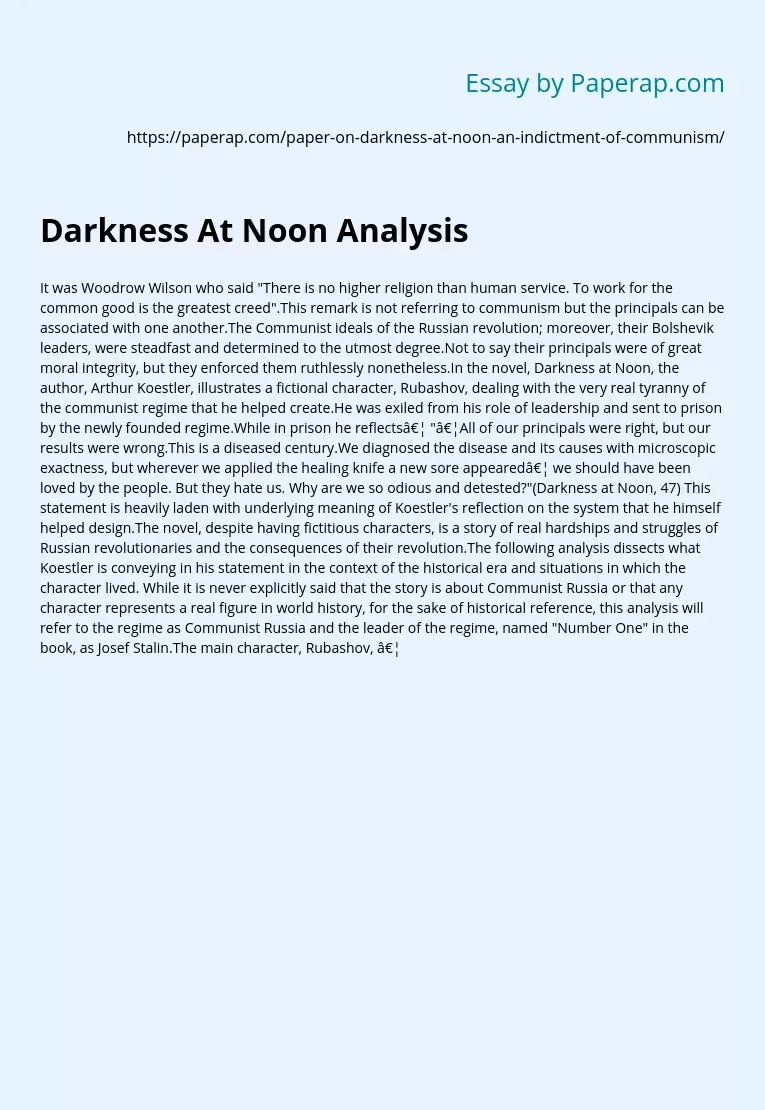Darkness At Noon Analysis
It was Woodrow Wilson who said “There is no higher religion than human service. To work for the common good is the greatest creed”.This remark is not referring to communism but the principals can be associated with one another.The Communist ideals of the Russian revolution; moreover, their Bolshevik leaders, were steadfast and determined to the utmost degree.Not to say their principals were of great moral integrity, but they enforced them ruthlessly nonetheless.In the novel, Darkness at Noon, the author, Arthur Koestler, illustrates a fictional character, Rubashov, dealing with the very real tyranny of the communist regime that he helped create.
He was exiled from his role of leadership and sent to prison by the newly founded regime.While in prison he reflects… “…All of our principals were right, but our results were wrong.This is a diseased century.We diagnosed the disease and its causes with microscopic exactness, but wherever we applied the healing knife a new sore appeared… we should have been loved by the people.
But they hate us. Why are we so odious and detested?”(Darkness at Noon, 47) This statement is heavily laden with underlying meaning of Koestler’s reflection on the system that he himself helped design.The novel, despite having fictitious characters, is a story of real hardships and struggles of Russian revolutionaries and the consequences of their revolution.The following analysis dissects what Koestler is conveying in his statement in the context of the historical era and situations in which the character lived.
While it is never explicitly said that the story is about Communist Russia or that any character represents a real figure in world history, for the sake of historical reference, this analysis will refer to the regime as Communist Russia and the leader of the regime, named “Number One” in the book, as Josef Stalin.The main character, Rubashov, …
Darkness At Noon Analysis. (2019, Dec 05). Retrieved from https://paperap.com/paper-on-darkness-at-noon-an-indictment-of-communism/

